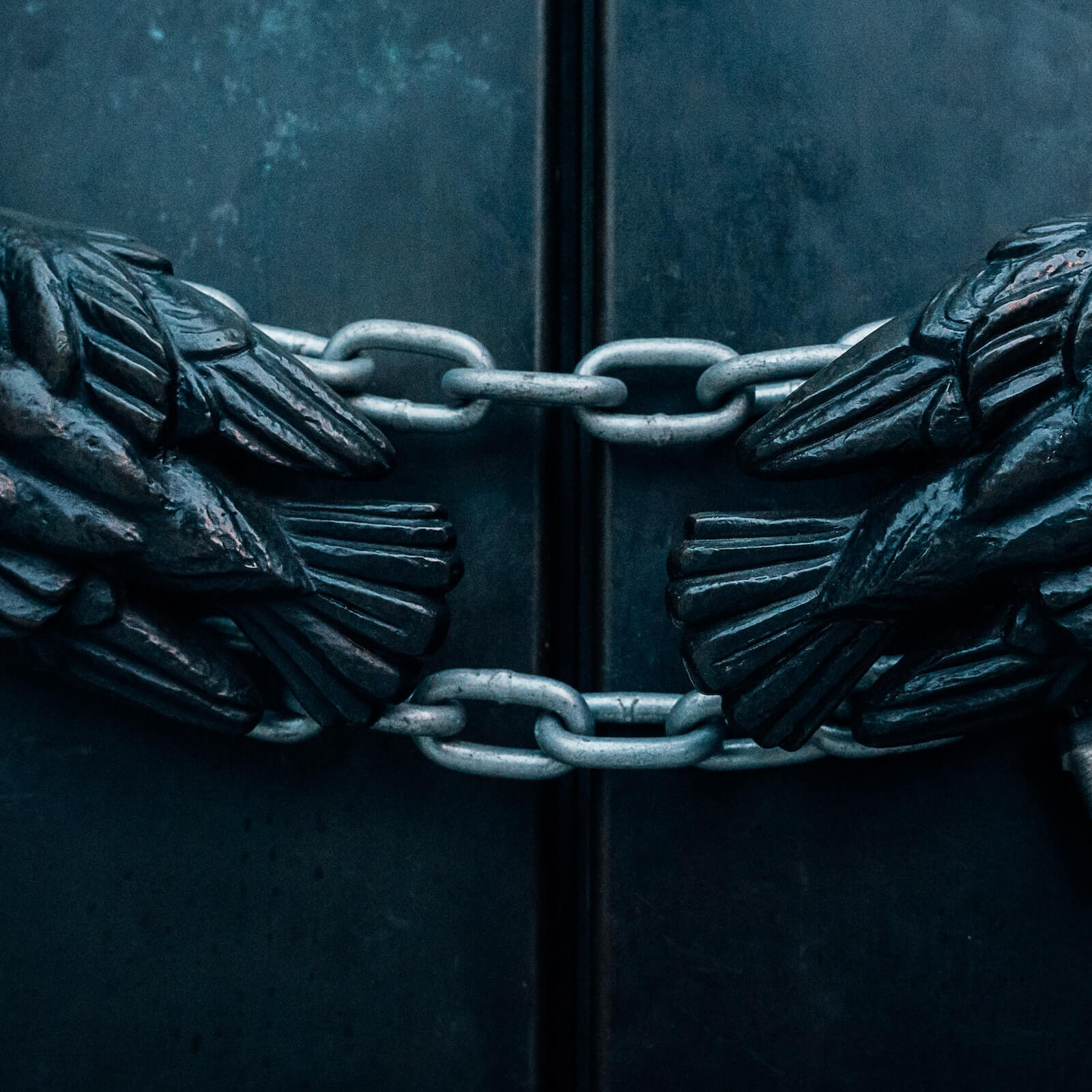
What Is Brand Protection? (and How to Go Beyond It)
Nov 15, 2022|Read time: 7 min.
Key Points
- Brand protection is the process by which brands can protect their intellectual property rights.
- Brands and organizations must stay vigilant to avoid reputational damage from brand abuse, infringement, and other threats.
- Brand protection is incomplete with just legal protection. Brands must assert control over their owned online assets through other methods.
Intellectual property (IP) is the core of a brand’s value and for that reason, the many forms of IP — like trademarks and copyrights — must be protected. In this guide, we’ll discuss brand protection, its benefits, IP abuse, and brand protection strategies. Plus — how to go beyond brand protection with a holistic digital marketing strategy.
What is brand protection and what are the benefits?
Brand protection is the specific process of protecting a brand’s intellectual property from infringement like counterfeiting, copyright piracy, patent violations, and more. Brand protection is one form of protection used to manage the reputation of companies, which are vulnerable to all manner of infringement and abuse.
Some of the most common benefits of brand protection include:
- Increased control of brand messaging
- Increased control of the brand’s various online properties
- Mitigation of revenue loss
- Protection of overall brand value
- Defense of intellectual property, patents, trademarks, and copyrights
- Maintenance of a consistent brand reputation
- Increased shareholder value
Brand protection as a discipline aims to mitigate and solve brand abuse issues.
Brand abuse is a term that covers all cases where an outside party infringes on a brand or company’s intellectual property. Infringers commit brand abuse to take advantage of a brand’s good reputation or cultural cachet. There are many kinds of brand abuse.
Forrester Study White Paper
See how fully integrated SEO drives business impact across the enterprise.
Types of brand infringement & abuse
Intellectual property infringement and brand abuse are a constant struggle for enterprise-level brands and organizations. Without defensive action through brand protection, the damage can destroy companies.
The most common types of brand abuse and IP rights include:
- Copyright piracy — Copyrights provide exclusive rights to the copyright holder, like the right to reproduce, distribute, display or perform the protected work. Third parties who use copyrighted material without permission are committing copyright infringement.
- Trademark infringement — Trademarks are a protection of intellectual property like a recognizable sign, design, or expression that identifies products or services from a particular source and distinguishes them from others. Infringement occurs when one uses a trademark that is identical or similar to a trademark owned by another party.
- Trademark squatting — This is when a party registers a trademark without the intention to use it. It may include foreign registration when a brand has yet to enter the market.
- Patent infringement — Patents provide a legal right to exclude others from making, using, or selling an invention for a limited period of time. Using a patented invention or process without permission or licensing is patent theft.
- Counterfeiting — The creation, marketing, distribution, and sale of fake products designed to cash in on a legitimate brand’s good name. Counterfeit goods are everywhere, even on Amazon and in distressing places like pharmaceutical drugs.
- Design infringement — Brand owners can register designs, the visual form of a product or other item, for protection. Use of the protected design during the registration period can amount to infringement
- Social media impersonation — Falsely presenting oneself as a public figure or brand on various social media platforms. Often this includes an attempt to confuse users or present the entity in a negative light. Brand impersonation can occur in just about any online setting.
- Rogue websites — Malicious websites or website registration that infringes on a brand’s IP including:
- Cybersquatting — Deliberate abusive registration of a domain name in violation of trademark rights by bad actors. This can also include registering a bunch of domains that relate to a brand’s name.
- Imitation sites — Sites that attempt to pass themselves off as a real brand often with fraudulent, criminal intent.
- Typosquatting — Deliberate abusive registration of a domain name that contains a typo version of a trademark that relies on user error to get visits.
Brand protection solutions and strategies
Companies cannot protect themselves without a strong brand protection strategy. The most common examples of brand protection services and strategies include:
- Intellectual property portfolio management — Having all of your intellectual property in one place is of massive importance for its protection and management. Brands often hire outside IP management providers if they don’t do it in-house.
- Business intelligence and monitoring — Collecting and analyzing disparate data about infringement is a monumental task, but one that must be prioritized. Depending on the industry, this might include scanning for online and offline infringement, authentication of infringement, detecting counterfeiting operations, and other efforts.
- Threat/prioritization analysis — With substantial biz intel data, a brand can analyze the biggest brand abuse and infringement threats and prioritize which to tackle first. Between this and business intelligence, brands can validate detected infringements.
- IP enforcement — Enforcing IP protection is another important, but often extremely difficult brand protection strategy. Determining the infringing parties, the types of infringement, and taking action against abusers using brand and legal means all fall under this heading. This process attempts to remove infringements, often by reporting infringement to regulatory bodies or law enforcement.
- Social media monitoring — Given the ubiquity of online counterfeiters and scammers on social media platforms, brands must also keep a close watch for these infringing parties and their social media accounts.
- Online marketplace monitoring — The popularity of online marketplaces means that brands must have a monitoring presence across them and invest in anti-counterfeiting efforts.
- Online advertising monitoring — For brands that sell physical products, online ad monitoring comes into play. This means keeping an eye out for ecommerce advertisements that point to counterfeit products. Counterfeit listings for knockoffs are a major issue.
- Partnership and supply chain monitoring — Brands can also pursue IP abusers through their partners and even their supply chains, distributors, and sellers. Often, these parties can help detect abuses and empower one’s brand protection strategy.
The Brand Intelligence Report
Exclusive AI insights, search trends, and brand strategies, delivered to your inbox.
More online brand protection methods
It’s obvious that today’s brands need traditional ‘brand protection’ strategies. But what about broader brand management and protection of preferred brand narrative and online reputation? Thankfully, brands can leverage their collection of owned assets to achieve success across all aspects of digital marketing.
Brands that are serious about intellectual property protection must implement a holistic, company-wide reputation defense as well.
Unforeseen events that harm or destroy a brand’s credibility or narrative in any industry can result in billions of dollars in lost value, sometimes eclipsing that of brand abuse.
Beyond brand protection
Creating a network of optimized and controlled online properties is the most powerful way for brands to achieve an authoritative position within an industry. Collectively, the properties can be leveraged to spread value throughout the brand’s digital footprint.
From corporate site to allies, blog posts, and more, the network of highly aligned online properties achieves the following:
- Dominates the search engine results for the brand’s name
- Allows a brand to reach its audience at all funnel stages
- Tells the authentic brand story in a consistent, authoritative way
- Asserts control over brand narrative and reputation
- Takes back the power from digital publishers, review sites, and affiliates
- Maximizes the value and purpose of each online asset
How it works
Typically, and at a very high level, the ongoing process includes the following steps:
- Collect and categorize all existing owned assets. This includes every single page a brand controls within the OAO MACH-6, plus its allies.
- Analyze all this existing online real estate for performance and prioritize optimizing each as needed.
- Search for gaps or opportunities to create new, high-value owned assets.
- Optimize all existing online real estate from multiple discipline perspectives.
- Create all the new assets your gap analysis suggested.
- Use linking to tie the entire network together.
- Assess performance over time, creating ongoing reports with numerous KPIs.
- Continue to refine each asset based on its performance across the KPIs.
- Rinse and repeat.
Over time this optimization strategy will result in increased online visibility, full-funnel customer engagement, control over the brand narrative, protection from potential brand harm during bad news cycles, and increased market share and spike in brand value.
Final thoughts
Brand protection and its highly specific management of intellectual property is among the most important foundations of any valuable company. The benefits go without saying and it applies to all industries.
But is brand protection enough? The answer is almost certainly not.
Savvy brands embrace an owned asset optimization philosophy to take back ownership of their stories and dominate the market and aggressively defend their intellectual property rights.
Brand protection FAQs
Brand protection is the process of protecting the intellectual property of brands from abuse like counterfeiting, copyright piracy, patent violations, and more.




